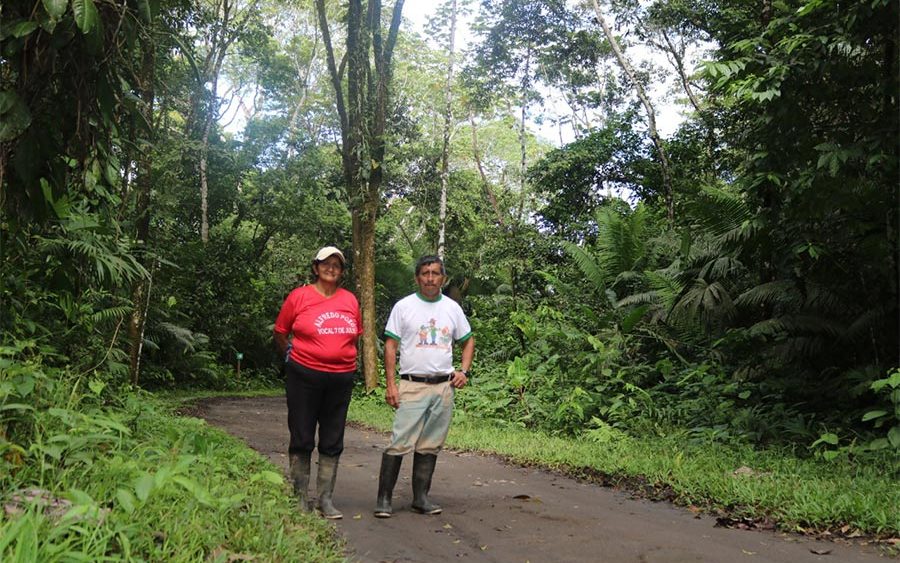Zenaida María Arias Quinatoa is from a farming family. She was born in Chillanes, Bolívar province. At the age of thirteen she left her canton to settle in Los Ríos and work in the fields. Sometime later, her father encouraged her to emigrate to the Oriente. Now she has a family, her husband Luis Julio Criollo and their three children.
Her parents did not have land and worked as “sharecroppers” in Chillanes and later in Los Ríos. They were farmers and raised coffee, cocoa and livestock. From a very young age, Zenaida worked in agriculture with her parents and siblings.
Due to lack of money, Zenaida only wanted to work with her husband, a farmer, who sought work in the fields.
Why emigrate? We asked.
“To have land and prosper.” Zenaida and her family worked as day laborers, but with her father’s help they managed to buy their first few hectares. At one point, she worked for an oil company and saved to buy land with her husband until they had the 40 hectares that they farm today.
Touring her farm is to feel the richness of the Amazon. The family has 10 hectares of hybrid palm and 30 hectares in other activities – tilapia pools, chicken rearing, as well as cacao, corn and watermelons in the community of Luz de América, in San Pedro de los Cofanes parish, in canton Shushufindi.



Zenaida started palm production nine years ago. For her, palm growing provides economic stability for her family because “you can always sell palm fruit.” She remembered that they told her to plant palm because it is “safe money” with little risk, unlike corn and watermelon, with which you have to take a chance and hope that the price is good at harvest time.
Palm growing has improved their economic situation, their lives and that of their children, who have had access to education thanks to the money it provided, said Zenaida. “With the money it provides we eat, and the people of the towns eat, since we use the money in the shops in town. Palm helps us all.”
Her crop has had problems with Bud Rot (BR) and sudden wilt, “but hybrid plants do not die easily,” she said. They faced difficult times in the beginning because it takes an investment and there is a three-year wait for harvest and sale. In addition, there were moments of low prices, which they compensated through the sale of other products and other activities.

In good times, they harvest up to 22 tons, in bad times, nine to 10 tons. The family sells its palm to buyers who pay the best price, or to those who offer security in payment; sometimes also to intermediaries, because they pay immediately.
Their experience with palm growing has been good for several reasons: faith, certainty of what they have and certainty of what they do. Moreover, they have always followed the advice of Zenaida’s father “not to stretch your feet beyond the covers;” they prefer to maintain their 10 hectares well, before planting more palm and not managing it properly.
Zenaida mentioned that they bought their land without a forest and that the forest they still have is preserved.
There is a family area on the farm with a six-hectare forest that they have transformed into a spa to protect the trees. Her dream now is to build a small, more spacious, concrete house and continue to support her children and their families with the savings produced by palm.


 Español
Español English
English

Comments are closed.